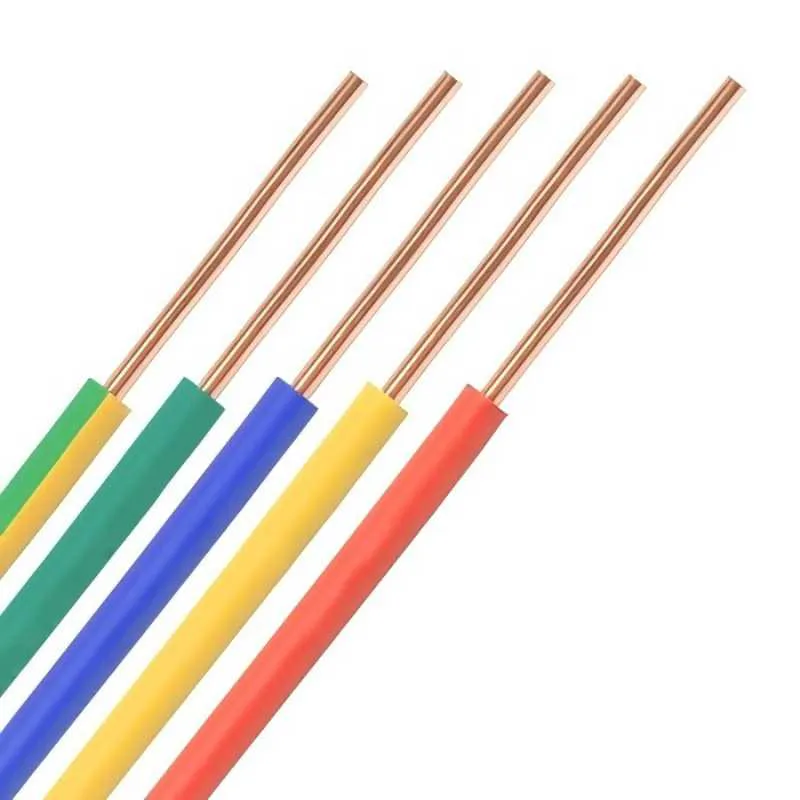Time: 2025-04-17 15:46:59 Source: Henan Province Jianyun Cable Co., Ltd.
Household electricity powers our daily lives, from lighting our homes to running appliances, and the wiring that delivers this electricity is a critical part of any residence. Understanding the nature of household electrical current, electricity, wiring, and the most common types of wiring used in homes ensures safety and efficiency. This article addresses these topics through four key questions, using a table to organize wiring information for clarity and analogies to make concepts engaging.

Normal household electrical current in the United States is alternating current (AC) at a frequency of 60 Hz, with standard voltage levels of 120 volts for most circuits and 240 volts for heavy appliances like dryers and stoves. The current, measured in amperes (amps), varies depending on the circuit’s load but is typically 15 to 20 amps for general-purpose circuits (e.g., lighting, outlets) and up to 50 amps for high-demand appliances.
For example, a 120-volt, 15-amp circuit can deliver up to 1800 watts of power (volts × amps = watts), sufficient for lights and small devices, while a 240-volt, 30-amp circuit can handle 7200 watts for an electric range. In other regions, like Europe, the standard is 230 volts at 50 Hz, but the principle remains the same: household current is designed to be safe and efficient for residential use. Think of household current as the steady rhythm of a heartbeat, delivering energy in a controlled, predictable flow to power your home.
Household electricity refers to the electrical power supplied to homes for everyday use, typically delivered through the local power grid. It is generated at power plants, transmitted over high-voltage lines, stepped down to medium voltage at substations, and finally reduced to 120/240 volts via transformers for residential use in the US. This electricity powers lighting, appliances, heating, cooling, and electronics, making it an essential part of modern living.
Household electricity is alternating current (AC), meaning the current reverses direction 60 times per second (60 Hz in the US), which allows for efficient transmission and use with transformers. It’s typically single-phase, meaning it uses two hot wires (one at 120V, another at 120V but 180 degrees out of phase, yielding 240V between them) and a neutral wire to complete the circuit. Household electricity is like the fuel in your car—it’s the energy that keeps your home running, delivered in a form that’s safe and practical for daily needs.
Household electrical wiring is the network of insulated conductors that distributes electricity throughout a home, connecting the main service panel (breaker box) to outlets, switches, lights, and appliances. It consists of various types of wires and cables, typically operating at low voltage (120/240 volts in the US), designed to safely carry current while preventing shocks and fires.
Wiring includes hot wires (carrying current from the panel), neutral wires (returning current to the panel), and ground wires (providing a safety path for fault currents). It’s installed within walls, ceilings, or conduit, following strict codes like the National Electrical Code (NEC) to ensure safety. For example, a typical circuit might use a 12/2 cable (two 12 AWG conductors plus ground) to power a 20-amp outlet circuit. Household wiring is like the circulatory system of your home, channeling electricity to every corner safely and efficiently.
The most common electrical wiring in homes is NM-B (Non-Metallic Sheathed Cable), often referred to as Romex. NM-B consists of two or more insulated wires (typically copper) and a bare ground wire, all encased in a flexible plastic sheath. It’s widely used for indoor, dry locations, such as wiring for outlets, lighting, and small appliances, due to its ease of installation, cost-effectiveness, and compliance with electrical codes.
| Wire Type | Description | Typical Use | Gauge (AWG) |
|---|---|---|---|
| NM-B (Romex) | Insulated wires in a plastic sheath | Indoor outlets, lighting, appliances | 14 AWG (15A), 12 AWG (20A) |
| UF-B | Similar to NM-B, but for outdoor/wet areas | Underground or outdoor wiring | 14 AWG to 10 AWG |
| THHN/THWN | Single wire, used in conduit | Wet areas, conduit runs | 14 AWG to 10 AWG |
While NM-B dominates for general indoor use, UF-B (Underground Feeder) and THHN/THWN are used for specific applications like outdoor or wet locations. NM-B is like the default tool in a homeowner’s toolbox—versatile, reliable, and perfect for most jobs around the house.
Normal household electrical current is 120/240 volts AC at 60 Hz in the US, delivering 15 to 50 amps depending on the circuit. Household electricity is the power supplied to homes, typically single-phase AC, for lighting, appliances, and more. Household electrical wiring distributes this electricity using insulated conductors, and the most common type is NM-B (Romex), used for indoor circuits. Understanding these basics ensures safe and efficient electrical systems, keeping homes powered and protected.